3 Easy Steps to Make Upwards of $4,000 a Month By Selling Baked Goods From Home
Expert advice plus three home bakers spill their success secrets
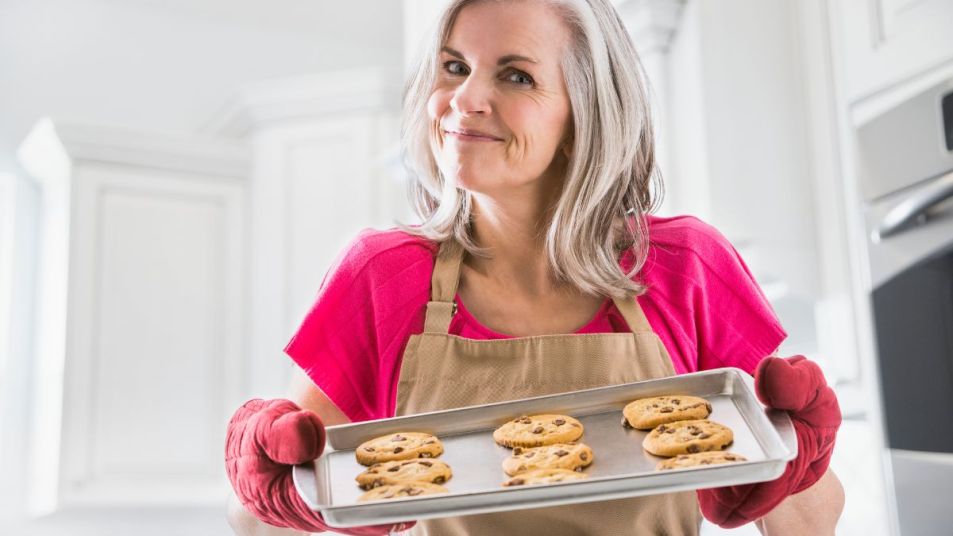
Do you love to bake? Do your friends and family rave about your delicious pecan pie or do your coworkers anticipate your to-die-for holiday cookies each year? Take note: There’s a lot of dough to be made in the cookies and cupcakes business. According to the American Bakers Association retail bakeries make about $3 billion each year. And nearly half of those businesses have one to four employees — they’re small businesses making big bucks. After all, who doesn’t like a cookie with their coffee or a cupcake after dinner? Starting your own baking business can be sweet as long as you go into it using the right ingredients you can learn how to sell baked goods from home. (Click through to see more ways to make money working from home.)
How to sell baked goods from home — and cash in!
You have your favorite recipes and all the bakeware and ingredients you’ll need to whip up some sale-worthy treats. Here, experts break down the easy steps you’ll need to take to get your business off the ground:
1. How to sell baked goods from home: Check on your local town laws
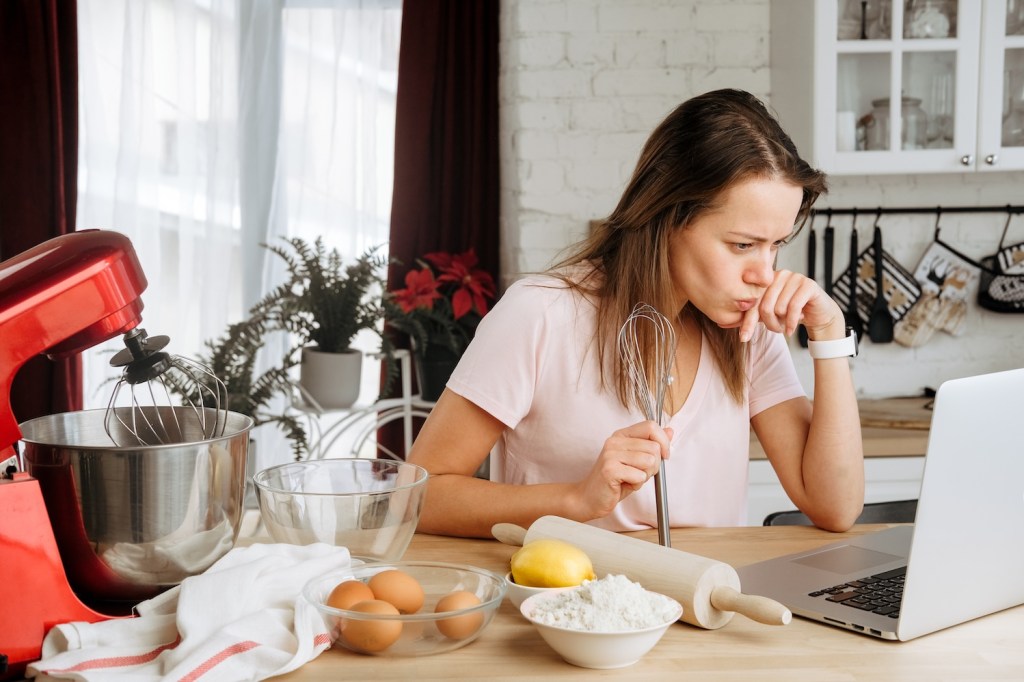
One of the first things every home baker must figure out is whether or not their potential business is legal, says Melinda Emerson, the author of Become Your Own Boss in 12 Months. There are some cities and towns where baking from home is fine. There are others that require permits and visits from the board of health, she says. Some locales will even require you to have a permit and cook in a commercial kitchen,
“If you’re going to make goods that you’re selling out of your house, you need to make sure that your township is zoned for you to cook in your home and sell the goods. That’s the only drawback of people making goods in their home — it may be illegal in their township where they live.”
William Gartner, the Bertarelli Foundation Distinguished Professor of Family Entrepreneurship at Babson College says you can reach out to the Board of Health or Department of Agriculture and Markets to find out if you need any licenses or zoning. “You can google ‘can I bake and sell cookies in,’ and insert your town,” Gartner explains. “Most states have something called a Cottage Food Law that allows people to sell food that’s non-perishable and won’t spoil as long as it’s packaged individually and labeled.”
2. How to sell baked goods from home: Calculate costs
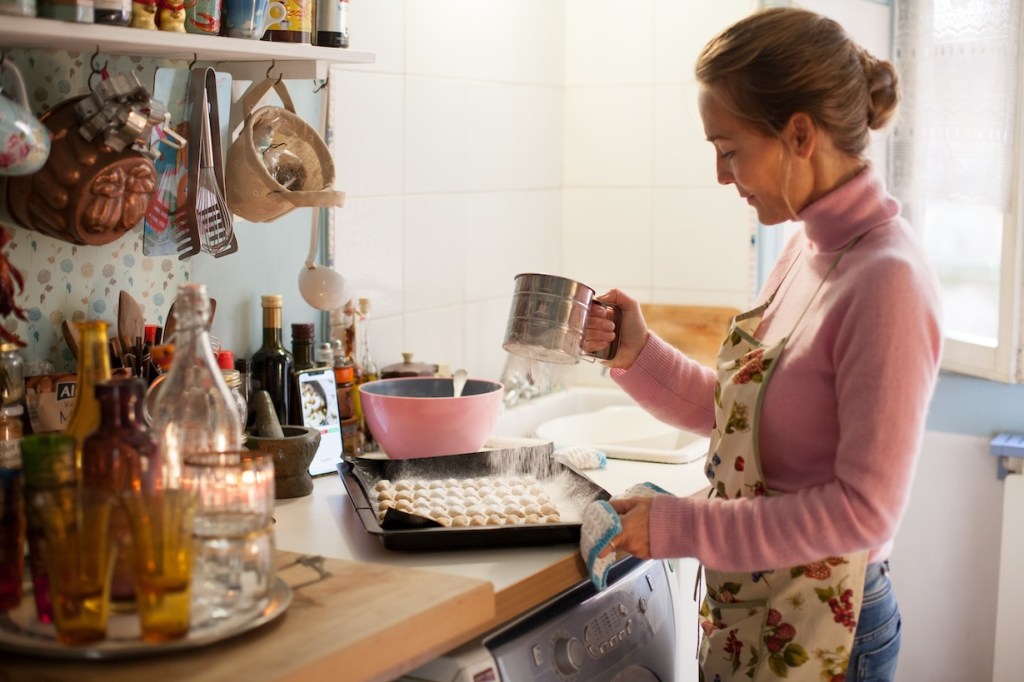
Once you’ve got the go-ahead to start your business it’s time to figure out what you want to sell. Are you better at making cookies or cakes? Are you a whiz with muffins and chocolates? Once you choose a path, stick with it. It’s better to stay focused and start small rather than trying to do too much and failing, Rick Camac, the Institute of Culinary Education’s director of industry relations says.
Bake what you know: “More items mean more cost, spoilage, labor required, expertise. You’re better off doing one or two products very well,” he explains. For example, if you have a signature treat such as loaded cookies, your great-aunt’s whoopie pies or tiramisu that might be a good place to start. Bake what you know people like instead of starting from scratch with a new recipe.
Do a trial run: Once you know what you’d like to sell, it’s time to do a virtual trial run, calculating how much it will cost to buy ingredients and equipment. After all, baking for a family party is very different than making 200 cookies for a bake sale! You’ll probably need to add some cookie sheets, cupcake tins or cake pans to your existing supplies.
Do the recipe math: Next, figure out what a typical order would look like. This is where your calculator will come in handy. If someone wants four dozen cupcakes, you’ll need to double or triple your favorite recipe if you’re baking from scratch or figure out how many boxes of premade mixes you’ll need. Keep a running total of your potential spending including equipment, ingredients, and packaging.
Add it all in: This might seem like a lot of prep but consider this: You’ll need to calculate your costs before you bake a single batch, so you know how much to charge for each snickerdoodle or apple tart you make. Your wholesale cost will include ingredients such as butter, sugar, flour and vanilla as well as packaging, the electricity or gas you’ll use during your baking and your hourly wage above and beyond the material costs, Emerson says.
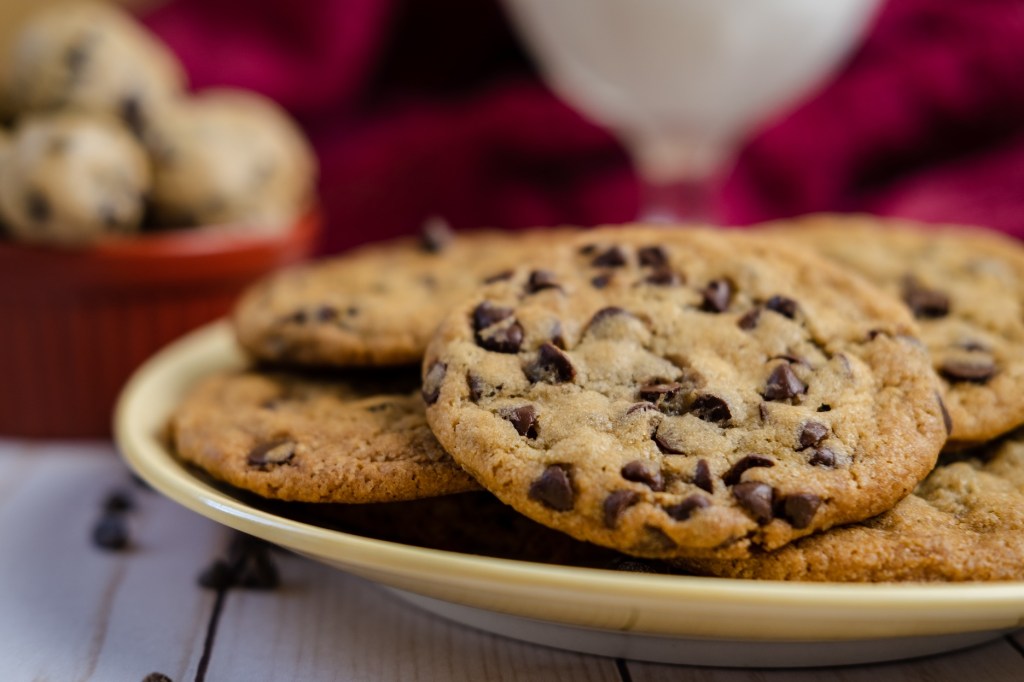
Pickup or delivery? “Are people coming to you to pick up their cake? Because if you’re delivering cakes, then you’ve got transportation and gas costs, too,” she adds. “You also need to be thinking about scale. When you go from selling four or five cakes a week to 25 cakes a week, where are you going to make them? You can’t make them all in your personal kitchen, so you’ve got to figure out how much you will pay for time in a commercial kitchen to make your goods.”
Check out *these* stores: There are ways to save money, though. Baking ingredients and packaging can be expensive so buying them at a warehouse club may make more sense, Emerson says. And you can save big on baking equipment by checking out your local library since some libraries loan out baking supplies. You can also hit garage sales and thrift stores where gently used baking equipment sells for considerably less than you’d pay in a store.
Create a list: When you’ve added up all your costs, you’ll have enough information to create a price list that covers all your expenses and builds in money to pay yourself for your time and efforts, Gartner says. Shoot for a profit margin of 20 to 30 percent.
Keep receipts: “There’s always a challenge at the beginning, when you’re starting up, because your expenses could be much more than your revenue,” he says. “All of those developmental costs are tax deductible, though, so make sure you document everything and save receipts.” (Yes, once your business becomes more than a hobby you must pay sales tax and report income to the IRS, too.)
3. How to sell baked goods from home: Get the word out
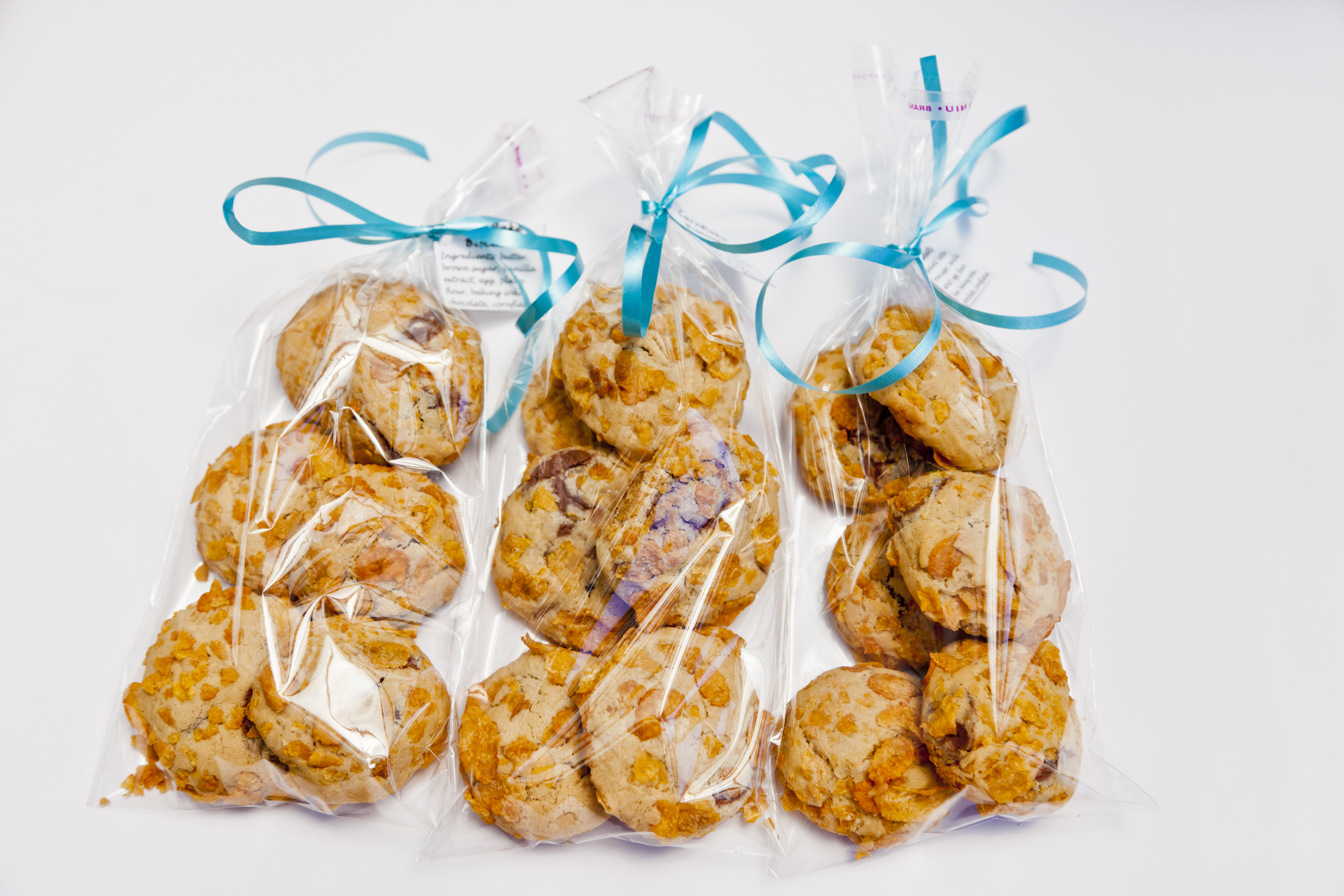
With all the prep work behind you it’s time to get into the kitchen and start your marketing so you can capture customer orders. The adage that a picture says a thousand words applies when it comes to selling baked goods. Getting your business and product out there on social media can create a market – and appetite – for your products.
Post online: Gartner says putting photos and videos up on Facebook, Instagram and TikTok may be one of the most important things you do when you’re first starting out. “You can basically advertise that you’re selling cupcakes and show how wonderful they are. And hopefully they’ll be at a price point where people will be interested in them and they’ll look attractive enough for people to try them,” he says.
Set up a stand: Aside from online, being in the right places helps, too. Gartner suggests renting a table at a farmer’s market or local street fair where you can pull people in and let them taste and see your products. Make sure you have flyers or, even better, a sign with a QR code or your Instagram handle so people can follow you and reach out when they need baked goods. In some cases, you may also be able to get your local deli or supermarket to carry your products, too.
Label your goods: If you’re selling to the public, even if it’s at your place of worship’s bake sale, your products will need a label that shows all of your ingredients, calling out if they contain one of the eight major food allergens identified by the Food and Drug Administration: milk, eggs, fish, shellfish, tree nuts, peanuts, wheat, and soybeans.
If you’re selling one-off orders on Facebook you don’t have to create labeling, but you should definitely provide buyers with an ingredients list anyway.
Set up pricing: In the end, though, all of this work can definitely pay off, Camac says. “Of course, you need to understand competition to make sure your pricing is in line. It would be reasonable for your product cost to be 15-25% of your pricing so, if your goal is 20% cost, then your gross profit would be 80%. A product that costs you $2 to make, you would sell for $10,” he says.
How to sell baked goods from home: 3 women who cashed in
There are some home bakers who are making thousands and tens of thousands of dollars each month. Read on for some inspirational success stoires:
Success story: “I make up to $3,000 a month selling cookies!”

“I’m a part-time physical education teacher, and when I had my daughter seven years ago, I was looking for a creative outlet,” says Megan Spahic. “I’ve always loved baking so I decided to take a class with a woman who runs a baking business out of her home. I loved it so much that I ran right out to buy a ton of supplies for my new hobby. Then, one day after posting photos of cookies I was making on Facebook, someone I knew asked if she could order some. I was shocked—I never thought I could make money with my hobby. So when my state passed the cottage food law, which allowed me to bake and sell my cookies from home, I decided to open my business, Celebrate Everything Cookies .”
“Springtime is one of my busiest times of the year. I work about 30 hours a week making personalized bunny and Easter egg cookies, shamrock cookies and cocoa bombs. I also sell “decorate your own cookie” kits, teach spring-themed cookie classes on YouTube and team up with Alyssa’s Cakery, a local business that only sells cakes and cupcakes. We promote each other’s businesses, and I hold pop-up events at her shop.”
“During the season I make up to $3,000 a month—money that pays the bills and allows our family to take trips to the zoo and Outer Banks vacations!” — as told to Julie Revelant
Success story: “I make up to $1,000 a week selling Greek desserts!”

“I’ve always loved to make baklava—a Greek dessert made with phyllo pastry, chopped nuts, lemon juice and honey—using my Greek grandma’s centuries-old recipe,” says Lisa Peirce. “Two years ago, a friend of mine in another town started selling the delicacy and making good money from it, and I realized if she could do it, so could I! So I borrowed a friend’s mixer, purchased some large pans at a school fundraiser and found a phyllo dough distributor. I got to work using my grandmother’s nut grinder and squeezing the lemon juice by hand.”
“Business picked up fast, and soon I added other Greek desserts like kourambiethes (powdered sugar cookies), koulourakia (twisted braid cookies) and melomakarona (honey-walnut cookies), which I sell to local restaurants and to individuals for weddings, events and the holidays. I currently ship to three states: California, Utah and New Mexico. My sales are mostly word-of-mouth referrals, but I also have a Facebook page (Pappas Pastries-Greek).”
“During the holidays, my busy time, I make around $1,000 a week. The money pays for Christmas gifts for family and friends, and goes back into the business for supplies and appliances!” — as told to Julie Revelant
Success story: “I earn up to $1,200 for each cake I sell!”

“I work full-time, but I’ve been baking my entire life, and I’ve always loved watching cake decorating shows on the Food Network. So when my daughter got engaged, I decided to take a cake-decorating class and make her a wedding cake,” says Linda Cloutier.
“After that, I baked for friends, entered competitions and made cakes for volunteers in my community. Then in 2012, the cottage food law was enacted in my state, allowing me to sell wedding cakes from my home, so I launched my business, Iced and Dazzle.
“To get the business started, I learned my state’s rules for selling food out of my home and got a food-handler’s certification. I found a mentor, Mimi Fix, to show me the ropes, and I bought equipment like cutters, molds, pans and icing tips.”
“I bake everything from scratch and make all types of wedding cakes including traditional, rustic and whimsical. I also make cookies, treats and create dessert tables for birthdays, engagement parties and bridal and baby showers. I do all of the work myself, but my husband helps with deliveries.”
“To market the business, I network with local vendors and post on social media, but a lot of my business comes from word of mouth. I usually have two clients a month and make between $600 and $1,200 per wedding cake, less for smaller desserts. The money I make goes back into the business and pays for things like trips and entertainment. I also donate my time to Icing Smiles, a nonprofit organization that works with ‘sugar angels’ who make custom cakes for kids who are critically ill. The business really encompasses all of my passions!” — as told to Julie Revelant
For even more ways to earn money work home, click through the links below:
How One Woman Earns $5,000 Baking Cookies During the Holiday Season
















